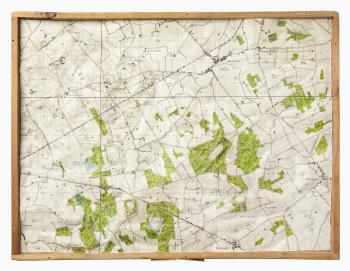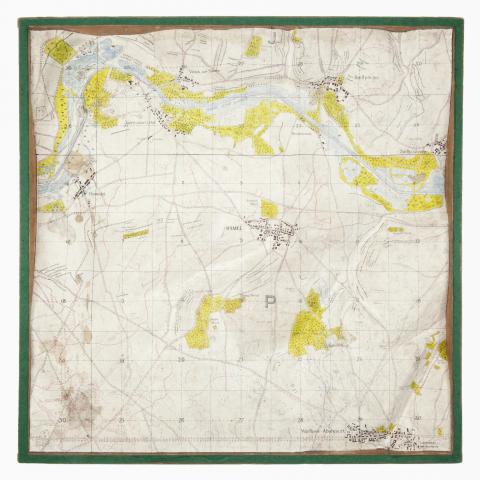Relief maps of the Western Front
Background
A series of three-dimensional relief maps was made in London in 1919 by a subsection of the Australian War Records Section (AWRS, the parent organisation of the Australian War Memorial).
Modelling Subsection 5AW, who created the maps, was established sometime around December 1918 and was managed by Lieutenant Cyril Isaac. In civilian life Isaac worked for the Education Department in Victoria. During the war he served with the 58th Battalion in Europe before joining the AWRS. The role of 5AW was to create three dimensional maps of the battlefields of France and Belgium and to later train staff in Egypt how to make similar maps of Gallipoli and Palestine.
Very few records from 5AW exist today and the reasons behind the maps’ creation are unclear. Records indicate they may have been created to help people who could not read contours on maps understand the terrain fought on by Australians, or as a precursor to the construction of larger battlefield plan models that were displayed in the Memorial’s galleries. The latter seems unlikely as Subsection 4AW was making the plan models at the same time that relief maps were made.
A third possibility is provided in a story that has circulated around staff at the Memorial, that the maps were created to aid C.E.W. Bean in writing the official histories of Australians in the First World War. It is possible that Bean used them whilst writing, but nothing has been found in the Memorial’s files or Bean’s papers to confirm this.
Technique
The maps were created by modelers and draftsmen. The modeler gradually built up the contours by making levels, or steps, possibly from plywood. Once all the levels were complete a coating of papier mache was placed over them. The papier mache was made with fine paper pulp and a heated clear glue called “small cake glue”. The modelers mixed the hot glue with paper pulp with most of the water squeezed out of it. They relied mostly on their sense of touch, working the mixture until it felt smooth, like plastic. The papier mache was smoothed and rounded to make the contours.
Once the map was dried, draftsmen transferred the details from the relevant trench map by hand. All details, including map grid squares were included on the items as they were maps in the truest sense of the word, not just models of the landscape.
Coverage
The Memorial holds maps of France and Belgium. While the AWRS planned on making relief maps of Palestine and Gallipoli, these never eventuated. There are 22 relief maps in the Memorial’s collection covering areas in France and Belgium, including Pozieres, Peronne, Villers-Bretonneux, Bullecourt, and Fromelles.
Sources:
Rutherford, Dianne, 'Teaching the terrain: First World War battlefields at the Australian War Memorial.' Published in The Globe Issue 55, 2004.
AWM16 4372/1/14 Series of relief maps of France, Gallipoli and Egypt made by Australian War records Section
AWM16 4372/21/16 Equipment for modelling
AWM93 13/1/10 Recipe for making paper-mache (plastic pulp) for models by Lieut C.E. Isaac



